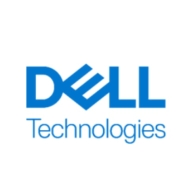

PowerEdge C and HPE NonStop are competing in the server market, each targeting different enterprise needs. PowerEdge C has the upper hand in pricing and support for cost-conscious buyers, while HPE NonStop is preferred for those prioritizing robust features and performance.
Features: PowerEdge C is recognized for performance optimization, scalability, and high CPU processing power, catering to data-intensive workloads. HPE NonStop excels in fault tolerance, continuous availability, and linear expandability, marking its strength in high-reliability applications.
Room for Improvement: PowerEdge C could improve its user interface, the integration of enhanced energy efficiency features, and offer better automation tools. HPE NonStop would benefit from simplifying its complex setup process, providing more accessible scalability options, and enhancing its user training programs.
Ease of Deployment and Customer Service: PowerEdge C is straightforward to deploy and is supported by comprehensive services, making integration into existing systems seamless. HPE NonStop, despite its complex setup, offers outstanding customer service focused on reducing downtime and ensuring high availability.
Pricing and ROI: PowerEdge C is cost-effective, with efficient setup costs and excellent ROI thanks to its energy efficiency and scalability, appealing to budget-conscious investments. Despite its higher price, HPE NonStop justifies the expense with long-term value from superior reliability and uptime, offering significant ROI for enterprises where downtime is a critical issue.


PowerEdge C help you to maximize hyperscale performance with up to 4 independent server nodes, flexible storage and shared infrastructure in a compact 2U chassis.
We monitor all Blade Servers reviews to prevent fraudulent reviews and keep review quality high. We do not post reviews by company employees or direct competitors. We validate each review for authenticity via cross-reference with LinkedIn, and personal follow-up with the reviewer when necessary.